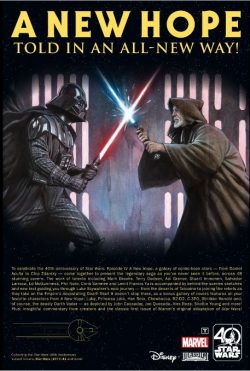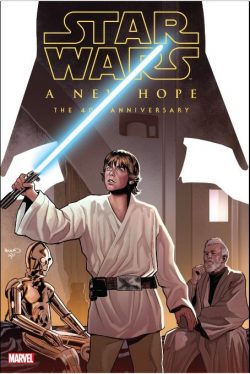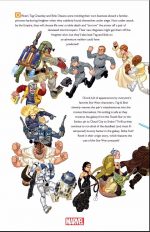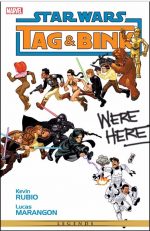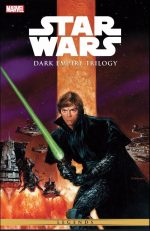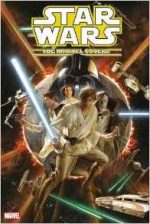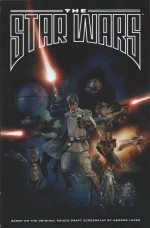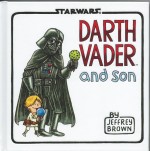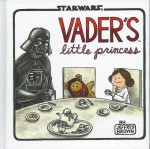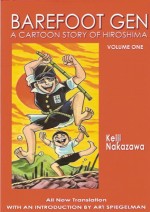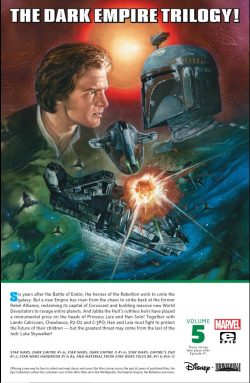
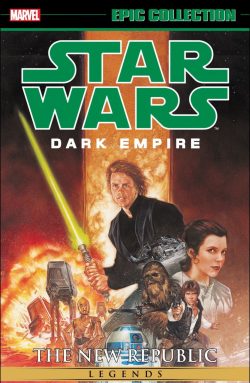
By Tom Veitch, Peet Janes, Scott Allie, Jason Hall, Henry Gilroy, Joe Casey, Cam Kennedy, Jim Baikie, Paul Lee, Brian Horton, John McCrea, Dario Brizuela, Francisco Paronzini, Arthur Adams, Edvin Biuković, Steve Crespo, Rodolfo DaMaggio, Doug Mahnke, John Nadeau, Jordi Ensign, Stan Manoukian, Vince Roucher, Isaac Buckminster Owens, Dusty Abell, Jim Royal, Jan Duursema, Pop Mhan, Andrew Robinson & various (Marvel)
ISBN: 978-1-3029-2698-4 (TPB)
Win’s Christmas Gift Recommendation: Epic Entertainment and Adventure… 9/10
I’m sure we’re all familiar with the mythology of Star Wars. What you might not know is that the first sight future fanatics got of its breathtakingly expansive continuity and the mythology-in-the-making way back in 1977 was the premier issue of the Marvel comic book adaptation. It hit shelves two weeks before the film launched in cinemas, setting the scene for a legion of kids and beginning a mini-phenomenon which encompassed the initial movie trilogy and expanded those already vast imaginative horizons.
Marvel had an illustrious run with the franchise – nine years’ worth of comics, specials and paperback collections – before the option was left to die. Comic book exploits were reinstated in 1991 by Dark Horse Comics who built on the film legacy with numerous superb titles and tales until Disney acquired the rights to Star Wars in 2012. Around the same time, the home of Donald & Mickey also bought Marvel Comics and before long the original magic was being rekindled…
When Marvel relaunched the enterprise, they included not just a core title but also solo books for the lead stars. Moreover, rather than ignore what had passed between their two bites of the cherry, Disney/Marvel began reissuing the Dark Horse material too. Amongst the very best of it was a tryptic of miniseries released as one grand adventure under their Star Wars Legend imprint.
Scripted primarily by Tom Veitch, this fifth paperback/digital Epic Collection gathers Star Wars: Dark Empire #1-6; Dark Empire II #1-6; Empire’s End #1-2, plus material from Star Wars Tales #8, 11, 16, 17 and Star Wars Handbook volume one: X-Wing Rogue Squadron & Star Wars Handbook volume three: Dark Empire: originally seen between December 1991 and September 2003.
Set after the movie Return of the Jedi and now relegated conceptually to an alternate universe in light of later cinematic releases, Dark Horse kicked off its Star Wars franchise with a supremely moody, action-packed thriller. Illustrator Cam Kennedy (reuniting with scripter Veitch after previously collaborating on the excellent and peculiar Light and Darkness War), rendered the alien universe and familiar characters in his own unique and magnificent manner, delivering quirky but reassuringly authentic settings and scenarios for a space opera romp that satisfyingly captures the feel and pace of the cinema versions, whilst building on the canon for Force-starved fanatics everywhere.
Star Wars: Dark Empire opened in December 1991 with ‘The Destiny of a Jedi’: unfolding about ten years after the Battle of Endor and the death and redemption of Darth Vader. Although the Emperor is gone, the war continues. The militaristic remnants of the Empire are still battling for every inch of the galaxy. The New Republic is desperately hard-pressed. Han Solo and his wife Leia, although new parents, are as deeply involved as ever, and Luke Skywalker is pushed to ever-more desperate measures as he attempts to destroy the pervasive unleashed evil corrupting the universe. His solution to rebalance the Force is to revive and rebuild the fabled Jedi Knights…
A mysterious new leader employing ingenious new super-weapons is winning the war for the Empire in ‘Devastator of Worlds’ and the heroes must separate to succeed. The Alliance is being picked off world by world and as ‘The Battle for Calamari’ rages, Han and Leia pursue the strategic aspects of the conflict resulting in a ‘Confrontation on the Smugglers Moon’ whilst Luke heads directly to the source and succumbs to the Dark Side when a dead foe returns thanks to he horrors of cloning in ‘Emperor Reborn’.
‘The Fate of a Galaxy’ is decided with closing 6th issue (October 1992) with Leia’s newly conceived child destined to become the greatest threat the galaxy has ever faced…
Can the heroes reunite to avert the tragedy before all is lost?
No need to guess as December 1994 saw the start of sequel series Star Wars: Dark Empire II with ‘Operation Shadow Hand’.
Veitch & Kennedy returned in a blaze of glory after the runaway success of Dark Empire with a superb continuation featuring the further battles of Luke, Leia, Han Solo and all the other movie favourites…
Deprived of clone bodies he was incubating to ensure a return to physicality, the ghost of Emperor Palpatine is intent on possessing the unborn child in Leia’s belly even as his Dark Side lieutenants struggle to become his successor. The Empire’s last infrastructure remnants are producing more diabolical planet-killing weapons to terrorise and subdue the battered, war-weary galaxy and the monster expects success thanks to his last resort weapon: Seven Dark Jedi fanatically executing his contingency plans, whilst his nemesis Skywalker pursues a cosmic wild goose chase sparked by Jedi database the Holochron. It has set him in pursuit of scattered Jedi survivors who might have escaped the purge…
‘Duel on Nar Shaddaa’, ‘World of the Ancient Sith’ and ‘Battle on Byss’ unite old favourites with new Star Warriors – such as Ysanna tribe adepts Rayf and Jem – in a desperate struggle for survival even as reborn, young Palpatine readies ‘The Galaxy Weapon’ to deliver total victory.
Han and Leia have been hiding their Force-rich twins Jacen and Jaina from the Emperor for years, but are now fearful that their imminent third child will be the spectral horror’s new target for possession. When news comes that Palpatine has eradicated the entire Alliance leadership, Luke and his new Jedi disciples arrive in time to rally the last survivors in a last-ditch attempt to push back the swiftly-closing ‘Hand of Darkness’ (#6, May 1995). Tragically, the Dark Jedi are hot on their trail and a deadly confrontation looms…
This big bombastic blockbuster rockets along, packed with tension and invention, with action aplenty and spectacular set pieces for the fans – although it might be a tad bewildering if your Star Wars IQ is limited.
The trilogy concluded later that year in Star Wars: Empire’s End (October & November 1995) with Jim Baikie replacing Kennedy as artist for a much shorter adventure wrapping up all the plot-threads in a fittingly spectacular fashion. Issue #1’s ‘Triumph of the Empire’ sees the regrowth and expansion of a new rebel alliance and next generation of Jedi Knights when Palpatine discovers his clone-body is breaking down. The ‘Rage of the Emperor’ compels him to attempt a precipitous possession of new-born Anakin Solo leading to one final, sacrifice soaked confrontation…
Accompanying the colossal star-shaking events are a tranche of short stories taken from anthological series Star Wars Tales, beginning with ‘Tall Tales’ by Scott Allie, Paul Lee & Brian Horton from #11 (March 2002). Here, gossip among patrons in a cantina about a ship called the Millennium Falcon leads to another brawl by some very familiar strangers, after which ‘The Other’ (#16, June 2003 by Jason Hall & John McCrea) sees Luke and Leia on Coruscant, debating her future and provoking some awful memories of when they were constantly at war…
Star Wars Tales #8 (June 2001 by Henry Gilroy & Dario Brizuela & Francisco Paronzini) shares ‘The Secret Tales of Luke’s Hand’ as 4-year old Anakin Solo hears bedtime stories of his uncle’s prosthetic paw before Joe Casey & Francisco Paronzini expose ‘Phantom Menaces’ (#17, September 2003) when Ambassador Luke Skywalker encounters a seemingly spectral Sith Lord haunting a candidate planet of the New Republic …
After all that, true Jedi adepts and prospective Padawans can enhance their SWIQ through studying a veritable avalanche of new friends and foes whilst also reacquainting themselves with old favourites in data-drenched Star Wars Handbook volume one: X-Wing Rogue Squadron by Peet Janes, Arthur Adams, Edvin Biuković, Steve Crespo, Rodolfo DaMaggio, Doug Mahnke, John Nadeau, Jordi Ensign, Stan Manoukian, Vince Roucher and Star Wars Handbook volume three: Dark Empire by Janes, Nadeau, Ensign, Isaac Buckminster Owens, Dusty Abell, Jim Royal, Jan Duursema, Pop Mhan & Andrew Robinson.
These catalogues detail everybody and everything from Wedge Antilles and Boba Fett to World Devastators and the Jedi Holocron and segue efficiently into a trove of extras including a gallery of covers – movie photos and painted works from Dave Dorman, Ashley Wood, Kia Asamiya, John Nadeau – plus previous collection covers by Dorman, Mark Zug and Tsuneo Sanda.
There’s also Dark Empire painted promo art, character roughs and equipment sketches, and pencilled pages all by Cam Kennedy; text End-pieces and Introductions from the original comics as well as art Prints and Plates by Kennedy and Dorman.
Exceptional fun, in strong stories with beautiful pictures, this is an utter delight for devotees of a galaxy not so very far, far away and anyone hungry for good old fashioned action entertainment.
STAR WARS and related text and illustrations are trademarks and/or copyrights in the United States and other countries of Lucasfilm Ltd. and/or its affiliates. © & ™ Lucasfilm Ltd. All rights reserved.

